How to create a financial forecast for a cattle farm?
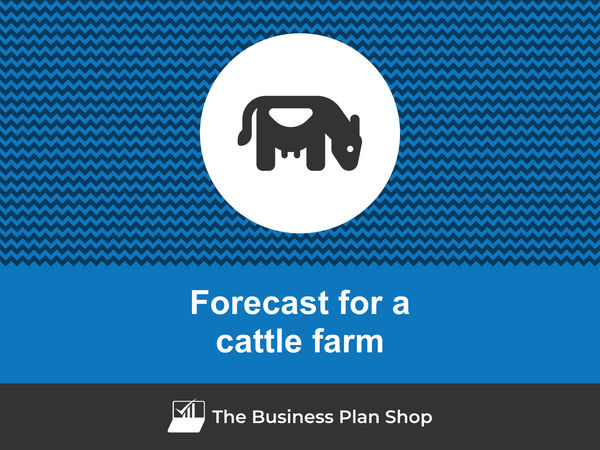
Developing and maintaining an up-to-date financial forecast for your cattle farm is key in order to maintain visibility on your business’s future cash flows.
If you feel overwhelmed at the thought of putting together a cattle farm financial forecast then don’t worry as this guide is here to help you.
We'll cover everything from: the main objectives of a financial forecast, the data you need to gather before starting, to the tables that compose it, and the tools that will help you create and maintain your forecast efficiently.
Let's get started!
Why create and maintain a financial forecast for a cattle farm?
The financial projections for your cattle farm act as a financial blueprint to guide its growth with confidence and ensure its long-term financial viability.
To create them, you will need to look at your business in detail - from sales to operating costs and investments - to assess how much profit it can generate in the years to come and what will be the associated cash flows.
During challenging market conditions, maintaining an up-to-date financial forecast enables early detection of potential financial shortfalls, allowing for timely adjustments or securing financing before facing a cash crisis.
Your cattle farm's financial forecast will also prove invaluable when seeking financing. Banks and investors will undoubtedly request a thorough examination of your financial figures, making precision and presentation essential.
Need a solid financial forecast?
The Business Plan Shop does the maths for you. Simply enter your revenues, costs and investments. Click save and our online tool builds a three-way forecast for you instantly.

What information is used as input to build a cattle farm financial forecast?
A cattle farm's financial forecast is only as good as the inputs used to build it.
If you are creating (or updating) the forecast of an existing cattle farm, then you mostly need your accounting information, key historical operating non-financial data, and your team’s input on what to expect for the coming years.
If you are building financial projections for a cattle farm startup, you will need to have done your research and have a clear picture of your competitive environment and go-to-market strategy so that you can forecast sales accurately.
For a new venture, you will also need a precise list of the resources needed to keep the cattle farm running on a day-to-day basis and a list of the equipment and expenditures required to start the business (more on that later).
Let's now take a closer look at the elements that make up your cattle farm's financial forecast.
The sales forecast for a cattle farm
The sales forecast, also called topline projection, is normally where you will start when building your cattle farm financial forecast.
Creating a coherent sales projection boils down to estimating two key drivers:
- The average price
- The number of monthly transactions
To do this, you will need to rely on historical data (for an existing business), market research data (for both new and existing cattle farms), and consider the elements below:
- Weather conditions: Unpredictable weather patterns can affect the availability and quality of pasture for grazing, leading to fluctuations in the average weight and health of the cattle. This can directly impact the average price per head of cattle sold.
- Supply and demand: Changes in consumer demand for beef and fluctuations in the supply of cattle can affect the average price per head. For example, a decrease in demand for beef due to a health trend may result in lower prices for cattle.
- Disease outbreaks: Outbreaks of diseases such as foot-and-mouth disease or mad cow disease can have a significant impact on the average number of monthly transactions. If your farm is affected, you may not be able to sell any cattle for a period of time, resulting in a loss of revenue.
- Trade policies: Changes in trade policies, such as tariffs or import/export restrictions, can affect the global market for beef and therefore impact the average price of cattle. For example, an increase in tariffs on imported beef may result in higher prices for domestically produced cattle.
- Feed prices: The cost of feed for cattle can vary greatly depending on market conditions and availability. A drought or shortage of feed can drive up costs, leading to higher prices for cattle. On the other hand, an abundant supply of feed can result in lower prices for cattle.
After the sales forecast comes the operating expenses budget, which we will now look into in more detail.
Need inspiration for your business plan?
The Business Plan Shop has dozens of business plan templates that you can use to get a clear idea of what a complete business plan looks like.

The operating expenses for a cattle farm
Once you know what level of sales you can expect, you can start budgeting the expenses required to operate your cattle farm on a daily basis.
Expenses normally vary based on how much revenue you anticipate (which is why, from experience, it is always better to start your forecast with the topline projection), and where your business is based.
Operating expenses for a cattle farm will include some of the following items:
- Feed and Forage: This includes the cost of purchasing hay, grains, and other feed for your cattle. It also includes the cost of planting and maintaining pastures for grazing.
- Veterinary Expenses: Keeping your cattle healthy is essential for a successful farm. This includes the cost of vaccinations, medications, and routine check-ups for your animals.
- Labor Costs: Hiring and paying employees to help with daily tasks such as feeding, cleaning, and maintenance of the farm.
- Equipment Maintenance and Repair: Cattle farms require various equipment such as tractors, trailers, and feeders. These items need to be regularly maintained and repaired to keep the farm running smoothly.
- Electricity and Water: Cattle farms require electricity for lighting, heating, and water pumps. Additionally, the cost of water for irrigation and animal consumption should also be considered.
- Breeding Expenses: If you plan on breeding your cattle, there are additional costs such as artificial insemination, bull rental, and pregnancy testing.
- Marketing and Advertising: To sell your cattle, you may need to invest in marketing and advertising efforts such as creating brochures, attending trade shows, or listing your animals for sale online.
- Insurance Costs: Protecting your farm and animals is crucial. Insurance costs can include property insurance, liability insurance, and livestock insurance.
- Accounting Fees: Hiring an accountant to manage your financial records and taxes is essential for a successful farm.
- Software Licenses: With technology becoming increasingly important in farming, you may need to invest in software licenses for record-keeping, herd management, or financial tracking.
- Banking Fees: Managing your farm's finances will involve banking fees such as transaction fees, wire transfer fees, and loan interest.
- Fuel and Transportation: If you need to transport your cattle or equipment, fuel costs and vehicle maintenance should be considered.
- Property Taxes: Owning land for your cattle farm will require you to pay property taxes.
- Rent or Mortgage: If you do not own the land for your farm, you may need to pay rent or a mortgage.
- Waste Disposal: Proper waste management is essential for a clean and healthy farm. This can include the cost of disposal fees for manure and other waste products.
This list will need to be tailored to the specificities of your cattle farm, but should offer a good starting point for your budget.
What investments are needed to start or grow a cattle farm?
Your cattle farm financial forecast will also need to include the capital expenditures (aka investments in plain English) and initial working capital items required for the creation or development of your business.
For a cattle farm, these could include:
- Land and Buildings: This includes the cost of purchasing or leasing the land for your cattle farm and any buildings that need to be constructed or renovated for your farm. Examples of buildings on a cattle farm may include barns, milking parlors, and storage facilities.
- Livestock: The purchase of cattle is a significant capital expenditure for a cattle farm. This includes the cost of purchasing breeding animals, replacement heifers, and feeder calves. It also includes the cost of any transportation or quarantine expenses for bringing the cattle onto your farm.
- Equipment and Machinery: Cattle farms require a variety of equipment and machinery for daily operations. This may include tractors, feed mixers, hay balers, and handling equipment. These items are considered fixed assets and should be included in your expenditure forecast.
- Fencing and Infrastructure: Fencing is essential for keeping your cattle contained and safe on your farm. The cost of materials and labor for constructing and maintaining fences should be included in your expenditure forecast. Other infrastructure expenses may include water systems, roads, and electricity.
- Breeding and Genetics: To maintain a productive herd, you may need to invest in breeding and genetics. This can include the cost of artificial insemination, genetic testing, and purchasing high-quality breeding stock. These expenses should be included in your expenditure forecast.
Again, this list will need to be adjusted according to the size and ambitions of your cattle farm.
Need a convincing business plan?
The Business Plan Shop makes it easy to create a financial forecast to assess the potential profitability of your projects, and write a business plan that’ll wow investors.

The financing plan of your cattle farm
The next step in the creation of your financial forecast for your cattle farm is to think about how you might finance your business.
You will have to assess how much capital will come from shareholders (equity) and how much can be secured through banks.
Bank loans will have to be modelled so that you can separate the interest expenses from the repayments of principal, and include all this data in your forecast.
Issuing share capital and obtaining a bank loan are two of the most common ways that entrepreneurs finance their businesses.
What tables compose the financial plan for a cattle farm?
Now let's have a look at the main output tables of your cattle farm's financial forecast.
The profit & loss forecast
The forecasted profit & loss statement will enable you to visualise your cattle farm's expected growth and profitability over the next three to five years.
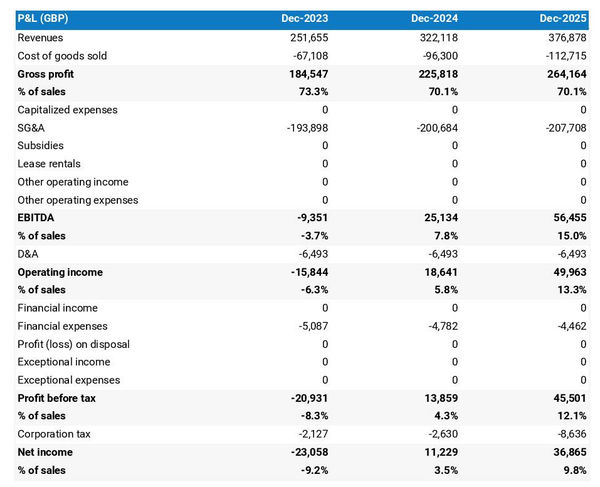
A financially viable P&L statement for a cattle farm should normally show:
- Sales growing above inflation
- Stable or expanding (ideally) profit margins
- A net profit
This will of course depend on the stage of your business: a new venture might be loss-making until it reaches its breakeven point in year 2 or 3, for example.
The projected balance sheet
Your cattle farm's projected balance sheet provides a snapshot of your business’s financial position at year-end.
It is composed of three types of elements: assets, liabilities and equity:
- Assets: represent what the business possesses including cash, equipment, and accounts receivable (money owed by clients).
- Liabilities: represent funds advanced to the business by lenders and other creditors. They include accounts payable (money owed to suppliers), taxes payable and loans from banks and financial institutions.
- Equity: is the combination of what has been invested by the business owners and the cumulative profits and losses generated by the business to date (which are called retained earnings). Equity is a proxy for the value of the owner's stake in the business.
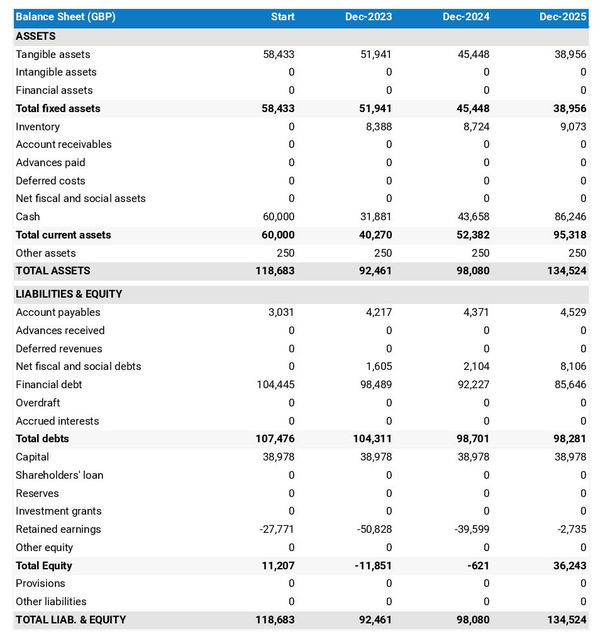
The cash flow projection
The cash flow forecast of your cattle farm will show how much cash the business is expected to generate or consume over the next three to five years.
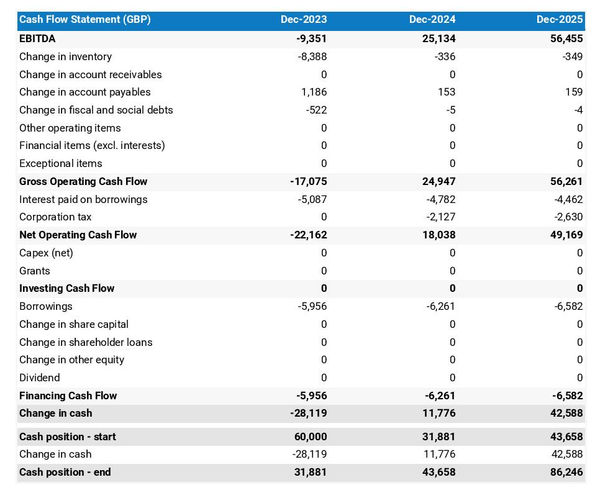
There are multiple ways of presenting a cash flow forecast but from experience, it is better to organise it by nature in order to clearly show these elements:
- Operating cash flow: how much cash is generated by the cattle farm's operations
- Investing cash flow: what is the business investing to expand or maintain its equipment
- Financing cash flow: is the business raising additional funds or repaying financiers (debt repayment, dividends)
Your cash flow forecast is the most important element of your overall financial projection and that’s where you should focus your attention to ensure that your cattle farm is adequately funded.
Note: if you are preparing a financial forecast in order to try to secure funding, you will need to include both a yearly and monthly cash flow forecast in your cattle farm's financial plan.
Need a solid financial forecast?
The Business Plan Shop does the maths for you. Simply enter your revenues, costs and investments. Click save and our online tool builds a three-way forecast for you instantly.

Which tool should you use to create your cattle farm's financial forecast?
Using the right tool or solution will make the creation of your cattle farm's financial forecast much easier than it sounds. Let’s explore the main options.
Using online financial forecasting software to build your cattle farm's projections
The modern and easiest way is to use an online financial forecasting tool such as the one we offer at The Business Plan Shop.
There are several advantages to using specialised software:
- You can easily create your financial forecast by letting the software take care of the financial calculations for you without errors
- You have access to complete financial forecast templates
- You get a complete financial forecast ready to be sent to your bank or investors
- You can easily track your actual financial performance against your financial forecast, and recalibrate your forecast as the year goes by
- You can create scenarios to stress test your forecast's main assumptions
- You can easily update your forecast as time goes by to maintain visibility on future cash flows
- You have a friendly support team on standby to assist you when you are stuck
- It’s cost-efficient and much cheaper than using an accountant or consultant (see below)
If you are interested in this type of solution, you can try our projection software for free by signing up here.
Calling in a financial consultant or chartered accountant
Enlisting the help of a consultant or accountant is also a good way to obtain a professional cattle farm financial forecast.
The downside of this solution is its cost. From experience, obtaining a simple financial forecast over three years (including a balance sheet, income statement, and cash flow statement) is likely to cost a minimum of £700 or $1,000.
The indicative cost above, is for a small business, and a forecast is done as a one-shot exercise. Using a consultant or accountant to track your actuals vs. forecast and to keep your financial projections up to date on a monthly or quarterly basis will cost a lot more.
If you opt for this solution, make sure your accountant has in-depth knowledge of your industry, so that they may challenge your figures and offer insights (as opposed to just taking your assumptions at face value to create the forecast).
Why not use a spreadsheet such as Excel or Google Sheets to build your cattle farm's financial forecast?
You and your financial partners need numbers you can trust. Unless you have studied finance or accounting, creating a trustworthy and error-free cattle farm financial forecast on a spreadsheet is likely to prove challenging.
Financial modelling is very technical by nature and requires a solid grasp of accounting principles to be done without errors. This means that using spreadsheet software like Excel or Google Sheets to create accurate financial forecasts is out of reach for most business owners.
Creating forecasts in Excel is also inefficient nowadays:
- Software has advanced to the point where forecasting can be done much faster and more accurately than manually on a spreadsheet.
- With artificial intelligence, the software is capable of detecting mistakes and helping decision-making.
Spreadsheets are versatile tools but they are not tailor-made for reporting. Importing your cattle farm's accounting data in Excel to track actual vs. forecast is incredibly manual and tedious (and so is keeping forecasts up to date). It is much faster to use dedicated financial planning tools like The Business Plan Shop which are built specially for this.
Need a convincing business plan?
The Business Plan Shop makes it easy to create a financial forecast to assess the potential profitability of your projects, and write a business plan that’ll wow investors.

Use our financial projection templates for inspiration
The Business Plan Shop has dozens of financial forecasting templates available.
Our examples contain both the financial forecast, and a written business plan which presents, in detail, the company, the team, the strategy, and the medium-term objectives.
Whether you are just starting out or already have your own cattle farm, looking at our template is always a good way to get ideas on how to model financial items and what to write when creating a business plan to secure funding.
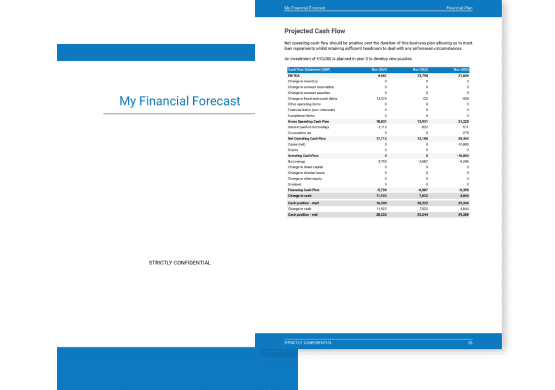
Takeaways
- A financial forecast shows expected growth, profitability, and cash generation metrics for your cattle farm.
- Tracking actuals vs. forecast and having an up-to-date financial forecast is key to maintaining visibility on your future cash flows.
- Using financial forecasting software is the modern way of creating and maintaining financial projections.
We hope that this guide helped you gain a clearer perspective on the steps needed to create the financial forecast for a cattle farm. Don't hesitate to contact us if you have any questions!
Need inspiration for your business plan?
The Business Plan Shop has dozens of business plan templates that you can use to get a clear idea of what a complete business plan looks like.

Also on The Business Plan Shop
Know someone who runs a cattle farm? Share our business guide with them!




